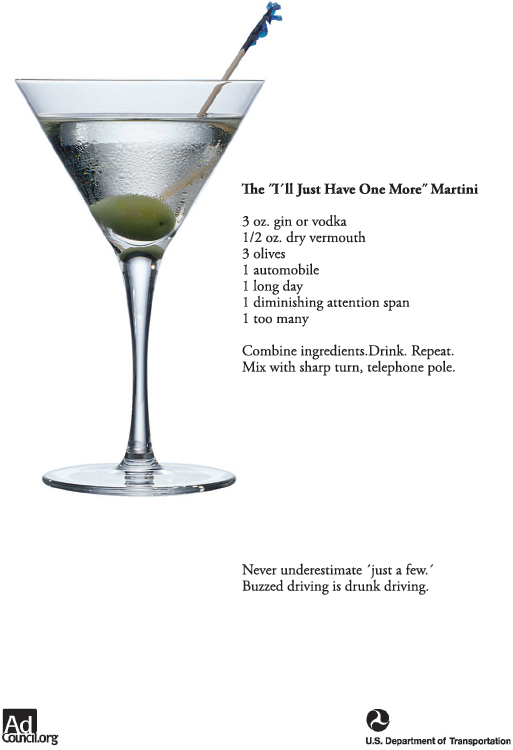Writing Quick Start: Writing Arguments
21
Writing Arguments
IN THIS CHAPTER YOU WILL LEARN TO
- understand the purpose and function of argument essays,
- use graphic organizers to visualize argument essays,
- integrate argument into an essay, and
- plan, organize, draft, revise, and edit essays using argument.
WRITING QUICK START

T
he advertisement shown here makes a simple argument, mostly in the form of a recipe:
- It identifies an issue — “buzzed” driving (driving after having a few alcoholic drinks).
- It makes a claim (that buzzed driving is drunk driving, a dangerous, possibly fatal mistake).
- It offers one reason that driving drunk is dangerous (“diminishing attention span”) and implies another (impaired driving ability).
Alone or with a classmate, rewrite the ad as a brief argument (one to three paragraphs). Use the claim as your thesis, add support (evidence, emotional appeals, and so on), respond to readers who might challenge your claim, and conclude with a convincing statement.
By following the steps in the Writing Quick Start, you started to build a sound argument: you made a claim, supported it with evidence, and refuted or accommodated opposing views. The ability to construct sound arguments is an important skill. Many political, social, and economic issues are resolved through public and private debate that involves argument.
USING ARGUMENT IN COLLEGE AND THE WORKPLACE | |
|
|